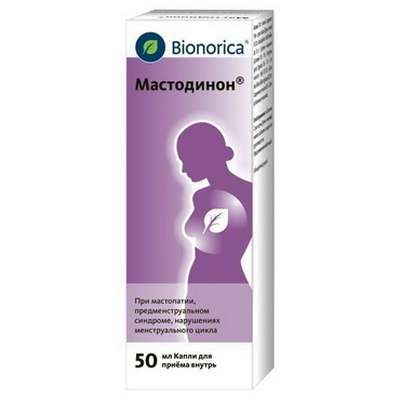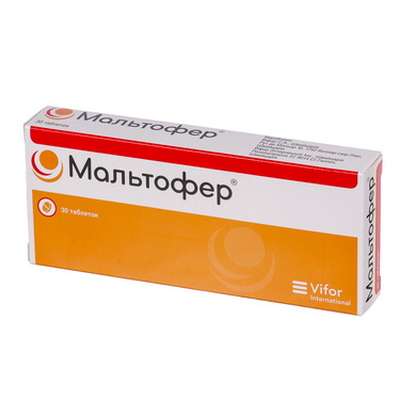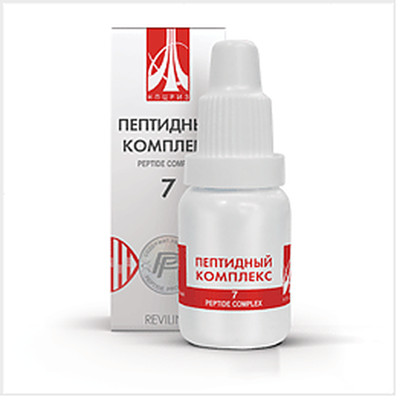Instruction for use: Sofradex
I want this, give me price
Active substance Gramicidin S + Dexamethasone + Framycetin
ATX code S01CA01 Dexamethasone in combination with antimicrobials
Pharmacological group
Glucocorticosteroids in combinations
Ophthalmic agents in combination
Nosological classification (ICD-10)
H01.0 Blepharitis
Blepharitis, Inflammation of the eyelids, Inflammatory diseases of the eyelids, Demodectic blepharitis, Superficial bacterial infection of the eyes, Superficial infection of the eye, Scaly blepharitis
H01.9 Inflammation of eyelid, unspecified
Allergic diseases of the edges of the eyelids, Infected eczema eyelids
H10 Conjunctivitis
Conjunctivitis infectious-inflammatory,Bacterial conjunctivitis, red-eye syndrome, Superficial infection of the eye, Chronic non-infectious conjunctivitis
H15.0 Sclerite
Acute scleritis, Chronic scleritis, Diffuse scleritis, Sclerite
H15.1 Episcleritis
Acute episcleritis, Chronic episcleritis
H16 Keratitis
Adenoviral keratitis, Bacterial keratitis, Spring keratitis, Deep keratitis without epithelial damage, Discoid keratitis, Dendritic keratitis, Keratitis rosacea, Keratitis with destruction of the cornea, Superficial keratitis, Point keratitis, Traumatic keratitis, Superficial point keratitis
H20 Iridocyclitis
recurrent iritis, sympathetic iridocyclitis, Sluggish posterior uveitis, Sluggish posterior uveitis, Posterior uveitis, the posterior segment of the eye Iridocyclitis, Iridocyclitis and other uveitis, Irit, Keratoiridotsiklit, Acute iritis, uveitis, cycle of Acute iridocyclitis, Acute non-infectious uveitis
H60 Otitis externa
Infections of ENT organs, Infections of the external auditory canal, Infectious-inflammatory diseases of the ear, Acute catarrhal inflammation of the external auditory canal, Infections of the external ear
Composition
Eye and ear drops 1 ml
Active substances:
Framicetin sulfate 5 mg
Gramicidin 0.05 mg
Dexamethasone (as sodium metasulfobenzoate) 0.5 mg
Auxiliary substances: lithium chloride; Sodium citrate; Citric acid monohydrate; Phenylethanol (phenylethyl alcohol); Ethanol 99.5%; Polysorbate 80; water for injections
Description of dosage form
Transparent, almost colorless solution with the smell of alcohol phenylethyl.
pharmachologic effect
Pharmacological action - anti-inflammatory, antibacterial, antiallergic, antipruritic.
Pharmacodynamics
Framicetin sulfate is an antibiotic from the aminoglycoside group, it acts bactericidal. It has a broad spectrum of antibacterial action, is active against gram-positive microorganisms, including Staphylococcus aureus, and most clinically significant Gram-negative microorganisms (E. coli, dysentery rod, proteus, etc.). It is not effective for streptococci. It does not affect pathogenic fungi, viruses, anaerobic flora. Stability of microorganisms to framicetin sulfate develops slowly.
Gramicidin has a bactericidal and bacteriostatic effect, expands the spectrum of the antimicrobial action of Framicetin due to its activity against streptococci and anaerobic microorganisms. Strengthens the effects of framicetin against staphylococci, tk. Also has an anti-staphylococcal effect.
Dexamethasone - GCS (glucocorticosteroids), which has a pronounced anti-inflammatory, antiallergic and desensitizing effect.
Dexamethasone suppresses inflammatory processes, suppressing the release of inflammatory mediators, the migration of mast cells and decreasing the permeability of capillaries.
When instilled in the eyes reduces pain, burning, lacrimation, photophobia. When instilled into the ears reduces the symptoms of otitis externa ear (reddening of the skin, pain, itching, burning in the external auditory canal, feeling of stuffiness of the ear).
Pharmacokinetics
With topical application, systemic absorption is low.
Framicetin sulfate can be absorbed through inflamed skin or open wounds. When entering the systemic bloodstream, it is quickly excreted by the kidneys unchanged. T1 / 2 of framicetin sulfate is 2-3 hours.
When ingesting dexamethasone can be absorbed quickly from the digestive tract. T1 / 2 is 190 minutes.
Indications
Bacterial diseases of the anterior part of the eye (blepharitis, conjunctivitis, keratitis (without epithelial damage), iridocyclitis, sclerites, episcleritis);
Infected eczema of the skin of the eyelids;
Otitis of the external ear.
Contraindications
Increased individual sensitivity to any of the components of the drug;
Viral or fungal infections, tuberculosis, purulent inflammation of the eyes, trachoma;
Violation of the integrity of the epithelium of the cornea and thinning of the sclera;
Herpetic keratitis (dendritic corneal ulcer) (possibly an increase in the size of the ulcer and a significant deterioration in vision);
glaucoma;
Perforation of the tympanic membrane (penetration of the drug into the middle ear can lead to the development of ototoxic action);
pregnancy;
Period of lactation;
Infants.
With caution: young children (especially when prescribing the drug in large doses and for a long time - the risk of developing systemic effects and suppression of the adrenal glands).
Side effects
Allergic reactions are usually delayed type, manifested by irritation, burning, pain, itching, dermatitis.
With long-term use of GCS local action is possible:
- an increase in IOP with the development of the symptomatic complex of glaucoma (optic nerve damage, reduced visual acuity and appearance of visual field defects), therefore, more than 7-day use of preparations containing GCS should regularly measure IOP;
- development of posterior subcapsular cataract (especially with frequent instillation);
- thinning of the cornea or sclera, which can lead to perforation;
- Attachment of secondary (fungal) infection.
Interaction
Do not use framicetin sulfate along with other antibiotics that have ototoxic and nephrotoxic effects (streptomycin, monomycin, kanamycin, gentamicin).
Dosing and Administration
Eye diseases: for a mild infection, 1-2 drops of the drug are injected into the conjunctival sac of the eye every 4 hours. In case of a serious infectious process, the drug is instilled every hour. As the inflammatory phenomena decrease, the frequency of instillations of the drug decreases.
Diseases of the ear: 2-3 drops are dripped 3-4 times a day, a gauze pad moistened with a solution can be placed in the external auditory canal.
Duration of the drug should not exceed 7 days, except in cases of obvious positive dynamics of the disease (SCS can mask hidden infections, and long-term use of antimicrobial components of the drug - to promote the development of a stable flora).
Overdose
Symptoms: prolonged and intensive local use can lead to systemic effects. When swallowing the contents of one bottle (up to 10 ml of solution), it is unlikely that serious side effects will develop.
Treatment: symptomatic.
special instructions
With long-term use of the drug, as with the long-term use of other antimicrobial agents, it is possible to develop superinfections caused by microorganisms resistant to the preparation, including fungi.
Continuous instillation of the drug into the eye can lead to thinning of the cornea with the development of its perforation, as well as an increase in IOP. Treatment with drugs containing SCS should not be repeated or prolonged without regular monitoring of IOP, eye examination for cataracts or secondary infections.
Local GCS should never be used in patients with eye hyperemia of unidentified etiology, Inappropriate use of the drug may lead to a significant impairment of vision (see "Contraindications").
Framicetin sulfate, which is part of the drug, is an antibiotic from the group of aminoglycosides, which is characterized by the development of nephro- and ototoxic effects in systemic application or local application to open wounds or damaged skin. These effects depend on the dose and increase with renal or hepatic insufficiency. Although the development of these effects was not observed with instillation of the drug in the eye, it should be taken into account the possibility of their occurrence in the case of topical application of high doses of the drug in children.
The duration of the drug should not exceed 7 days, except in cases of an obvious positive dynamics of the disease, t. Long-term use of SCS, included in its composition, can mask hidden infections, and long-term use of antimicrobial components - contribute to the emergence of a stable microflora.
The bottle must be closed after each use. Do not touch the tip of the pipette to the eye. After opening the vial, the drug should be used within 1 month.
Patients who, after instillation into the eye of the drug, temporarily lose their clear vision, are not recommended immediately after instillation of the drug to drive a car or work with complex equipment, machines or some other complex equipment that requires clarity of vision.
Form of issue
Eye and ear drops. For 5 ml in a bottle of transparent glass of yellow, ukuporennom rubber stopper, covered with an aluminum cap with a plastic lid. On 1 ˘Ű. Together with a dropper of PE are placed in a cardboard box.
Conditions of leave from pharmacies
On prescription.
Storage Conditions
At a temperature not higher than 25 ░ C.
Keep out of the reach of children.
Shelf life
2 years. After opening the bottle 1 month.
Do not use after the expiry date printed on the package.

 Cart
Cart





